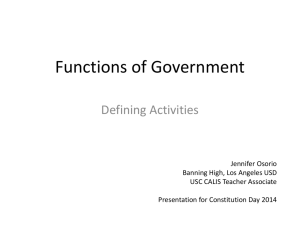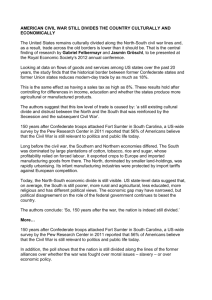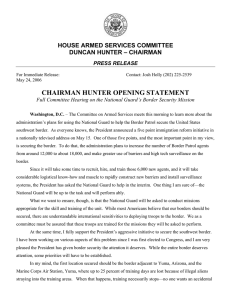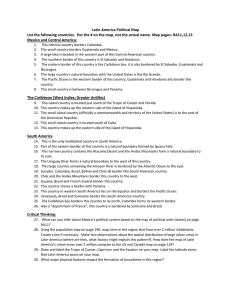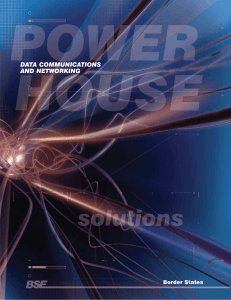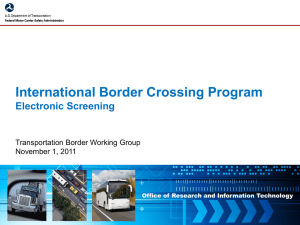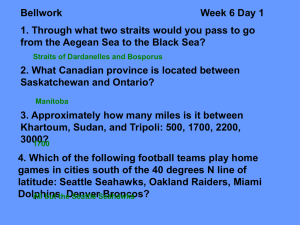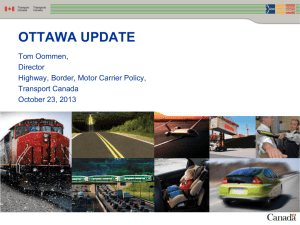PowerPoint - It`s Our Future
advertisement
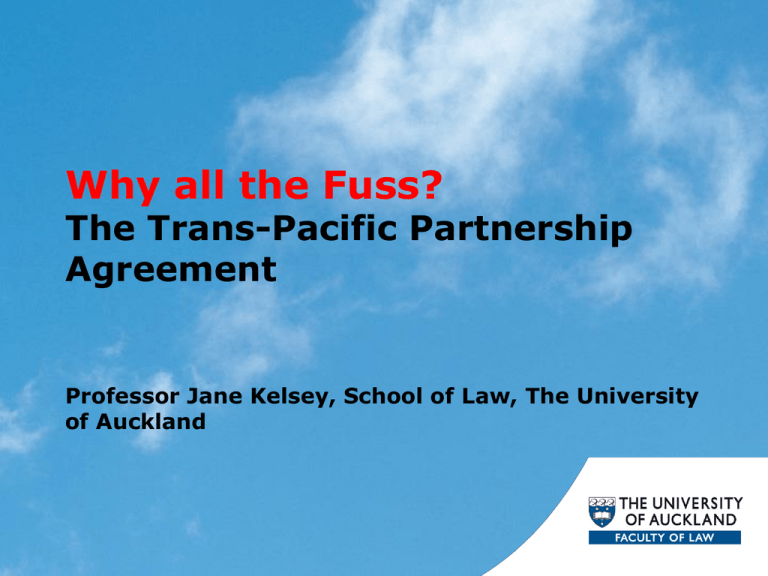
Why all the Fuss? The Trans-Pacific Partnership Agreement Professor Jane Kelsey, School of Law, The University of Auckland Focus of this presentation The big picture The scope of the negotiations The secrecy issue ‘Behind the border’ Specific issues What is the Trans Pacific Partnership? ‘Agreement for 21st century’ - aims to reach further behind the border than any other FTA 11 countries: Australia, Brunei, Chile, Malaysia, New Zealand, Peru, Singapore, US, Vietnam, plus Canada & Mexico from Dec Effectively US + 10 countries as any deal must be approved by US Congress, ie US has a veto NZ’s rationale for a TPPA 1. Commercial gains - claim $1.7 billion welfare gains by 2025, discredited methodology - reality check, US Congress will never agree to market access 2. Closer relationship to US - US sees TPP as counter to China in region - Groser said NZ would walk away from TPP if anti-China 3. Free Trade Area of Asia Pacific - US-led FTA model consistently rejected - ASEAN+6 (China,Korea,Japan,Aust,NZ,India) launched August 2012 Scope of a 21st century agreement 29 working groups market access: most current parties are already highly liberalised & have many FTAs. Stricter rules than WTO/FTAs for goods, agriculture, non-tariff barriers, services, investment, intellectual property Rules go further behind the border than any previous agreement The Secrecy Issue No documents released unless all parties agree They have agreed that: No text will be released until the final text is signed No background documents or draft text will be released until 4 years after TPPA comes into force Countries can apply their domestic consultative process, ie US advisory committees Acceding countries can’t see draft texts until they join TPPA Targets ‘Behind the Border’ This is not about ‘trade’. TPP aims to reach further behind the border than any previous free trade and investment treaty through enforceable constraints on the (a) content; and (b) processes of domestic law and policy. But draft texts & proposals are secret until signed What does ‘behind the border’ mean? Leaked texts, existing FTAs, info from (non-NZ) negotiators show potential constraints on domestic policy and regulation in chapters on: Investment Government procurement Intellectual property State enterprises Cross border services Supply chains Regulatory coherence Transparency Investment, eg. • Pressure to remove restrictions on foreign ownership of strategic assets (eg privatisations) • Not make new regulations that significantly impact on a foreign investment (eg tobacco, alcohol, gambling policies, zoning, building code) • Investor right to enforce directly in private offshore tribunal (ISDS), ave $8m cost, duration 4 years, aims to chill policy decisions Government procurement, eg. No local preferences or offsets (threshold unclear) Complex bidding & review processes Contracts become protected investments, eg • IT and technology infrastructure • PPP roads, sports facilities, sewage plants • Water concessions • Local government bonds Enforceable by foreign investors through ISDS Intellectual Property, eg US demands on copyright term extension, temporary copies, circumvention of TPMs will mean: • adverse impact on R&D and innovation; • massive cost increase for libraries, education institutions, museums, etc; • restrict compatibility of IT systems & software; • parallel imports are illegal; • major cost increases for businesses. State enterprises US-promoted chapter, all governments are worried Not just SOEs and Crown companies, but scope of definition is unclear Disciplines would apply if state entity receives any perceived benefits, incl • implied government guarantees, • use of public land or facilities, • monopoly rights, • access to subsidies, grants, financing. Regulatory coherence & transparency Skews decision making process in favour of commercial interests & criteria, through • specified procedures, disclosures, notifications; • preferential rights of affected economic interests to participate in decisions; • publishing reasons, assessment of evidence, responses to submissions, with appeal/review; • requiring flawed RIS cost-benefit analysis & criteria. Process & documentation feeds into chilling effect & use in investor-state disputes In summary • Secret treaty making and politically motivated tradeoffs are anti-democratic; • There is no balance of social, economic, Treaty, environmental, cultural interests; • Rights are vested in foreign interests that can hold elected councils to ransom; • The result is bad law that is almost impossible to undo. For more information see www.itsourfuture.org.nz and www.fairdeal.net.nz

